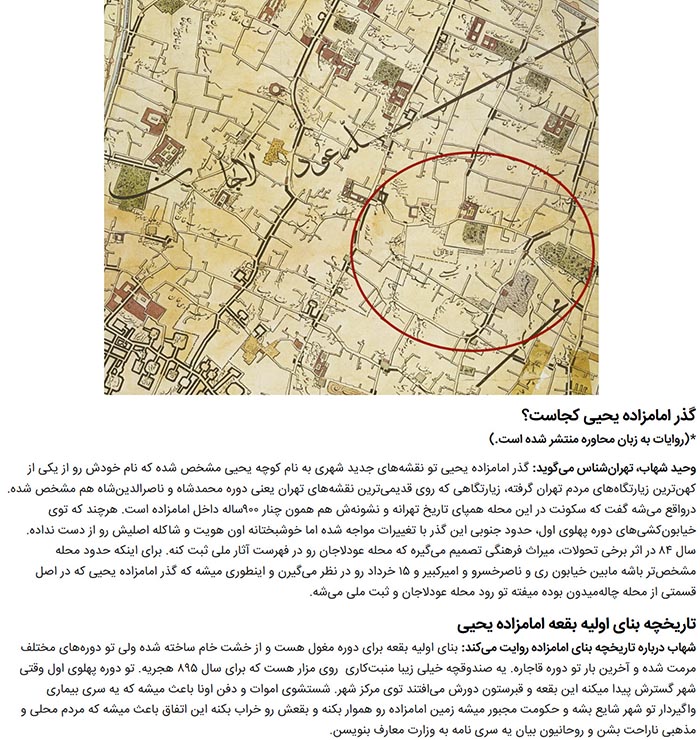Exploring the Cultural Significance of Imamzadeh Yahya Passage in Tehran

Introduction
Tehran, a city steeped in history and transformation, tells a tale of resilience and renewal through its streets and neighborhoods. Among these, the Passage of Imamzadeh Yahya stands out for its cultural and historical significance. This passage not only serves as a vital connector of neighborhoods, but it also encapsulates centuries of Iranian history, from the era of the Safavids to the Qajar dynasty and beyond.
A Glimpse into Tehran’s Historical Landscape
The history of Tehran is a tapestry woven from the threads of numerous events, including wars, invasions, and revolutions. The Imamzadeh Yahya Passage represents an essential reflection of this dynamic history. Its name derived from the Imamzadeh Yahya shrine, a site historically significant to the people of Tehran, marks this passage as a location of reverence, community, and memory.
Originally a small village, Tehran evolved into a vibrant city, especially during the Safavid era, when Shah Tahmasp fortified its perimeters, allowing growth and urban structure to flourish. The fortifications delineated the boundaries of what would become the heart of Tehran, with landmarks reflecting architectural styles influenced by European models during the Nasserid period. It was during this time that the presence of foreign ambassadors and the establishment of educational institutions, like the Dar al-Fonun, laid the groundwork for Tehran’s modernization.
Architectural and Cultural Relevance of Imamzadeh Yahya Passage
The Imamzadeh Yahya Passage serves as a living testament to the areas’ architectural evolution, showcasing the blend of tradition and modernity. Marked on current maps as Yahya Alley, its layout and architecture provide insights into the daily life of past generations in Tehran. Notably, the passage is situated in proximity to significant neighborhoods like Oudlajan and Chaleh-Meydan, each contributing unique layers to the historical narrative of Tehran.
The shrine itself, with roots tracing back to the Mongol era, underwent various renovations, reflecting the city’s changing needs and tumultuous history. The mausoleum, characterized by its intricate designs and an iconic 900-year-old plane tree, represents the historic continuity that has endured through centuries of conflict and change. This legacy is not merely about physical structures; it encompasses the stories of the residents and their deep-rooted ties to this sacred space.
March 26, 2025 | 8:56 pm



